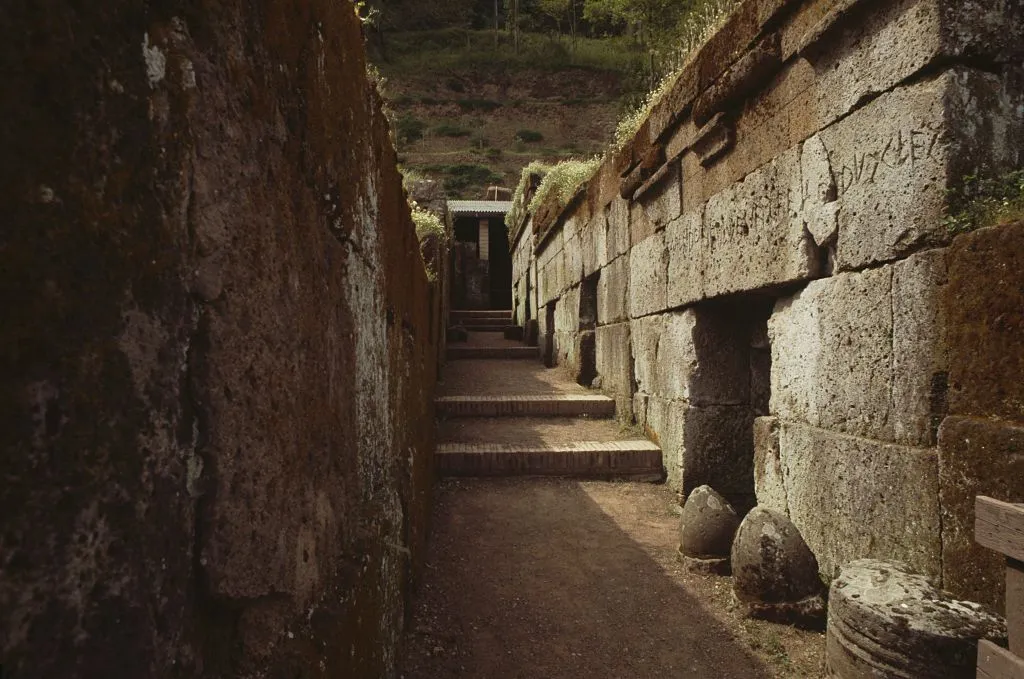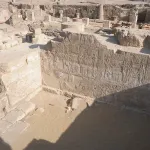
The illegal excavation of an Etruscan burial site in Umbria, in central Italy, has been seized by Italian authorities, Italy’s Minister of Culture announced on Tuesday. Police now seek two people suspected of stealing an urn and sarcophagi, among other artifacts, worth a total 8 million euros ($8.5 million) with the intent to sell sell them on the black market.
As first reported in English by the Associated Press, the illegal operation neighbored another Etruscan burial site unearthed by a farmer on his land in 2015. A statement from Italian authorities said they were tipped off to the crime by photographs of objects and the in-progress excavation circulated by traffickers that resembled artifacts found on the farmer’s property.
The illegal dig was adjacent to another Etruscan burial site discovered by a farmer tilling his land in 2015, authorities said. They were tipped off by photographs of artifacts and the site that were circulating on the black market that resembled objects found on the farmer’s land. Through a combination of aerial photography and phone tap, investigators located the illegal dig on land owned by a local businessman who, in turn, owned equipment capable of large-scale excavation.
The Etruscan civilization flourished in central Italy, primarily in parts of present-day Tuscany, Umbria, and Lazio, between the 8th and 3rd centuries BCE, until its ultimate absorption into Rome. Before that, it boasted one of the most sophisticated Iron Age societies, with achievements in metalworking, farming, and visual art.
For centuries, scholars wondered where the Etruscans they came from and how their enigmatic language resisted for so long assimilation with migrating Indo-Europeans—which was highly unusual for the period and place. However, the former mystery is being unraveled, to immense implications for the history of European migration.
Among the artifacts discovered at the second site were two sarcophagi thought to have contained two Etruscan princesses, one of which still contained a skeleton and a burial trousseau, or a collection of objects intended to accompany the deceased to the afterlife, that consisted of decorated urns, perfume jars, and comb carved from bone.

